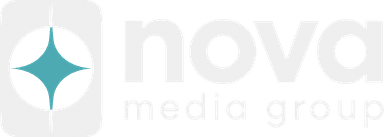Wrike's Advanced Analytics: Data-Driven Project Management Mastery
Your project data tells a story, but are you listening? Every task completion, resource allocation, and timeline adjustment in Wrike generates valuable insights that most teams never fully leverage. While competitors struggle with spreadsheet exports and manual reporting, forward-thinking organizations are using Wrike's advanced analytics suite to predict project outcomes, optimize resource utilization, and demonstrate tangible ROI to stakeholders.
Understanding Wrike's Analytics Architecture
At its core, Wrike's analytics engine processes millions of data points across your workspace to deliver real-time business intelligence. The platform's reporting capabilities extend far beyond basic project tracking, offering predictive analytics and machine learning-powered insights that transform how teams approach project management.
The analytics framework consists of three primary components: Performance Insights for tracking team productivity, Business Intelligence for strategic decision-making, and Custom Analytics for tailored reporting needs. Each component integrates seamlessly with Wrike's project hierarchy, ensuring data consistency across all organizational levels.
Custom Dashboards: Your Command Center for Success
Wrike's custom dashboard functionality allows you to create personalized views that matter most to your role. Marketing directors can monitor campaign performance metrics alongside resource allocation, while CFOs can track project costs against budgeted amounts in real-time.
Building effective dashboards requires understanding widget combinations. Start with the Analytics widget for trend analysis, add Table widgets for detailed task lists, and incorporate Chart widgets for visual representations. The key is balancing comprehensive data with visual clarity. A dashboard with more than 8-10 widgets often becomes overwhelming and counterproductive.
Pro tip: Create role-specific dashboard templates that can be duplicated across teams. This ensures consistency in reporting while saving setup time for new team members.
Resource Management Optimization Through Data
Resource optimization represents one of Wrike's most powerful analytics applications. The Workload view combined with resource management reports reveals patterns that manual tracking simply cannot uncover. Teams typically discover they're operating at 120% capacity in certain areas while other resources remain underutilized.
The Resource Management report provides heat maps showing allocation trends over time. By analyzing these patterns, project managers can identify bottlenecks before they impact deliverables. One enterprise client reduced project delays by 34% simply by redistributing work based on Wrike's workload analytics.
Advanced users leverage the API to export resource data into specialized business intelligence tools like Tableau or Power BI, creating even more sophisticated optimization models. This integration capability makes Wrike particularly valuable for organizations with established BI infrastructure.
Time Tracking Analytics: Beyond Simple Timesheets
Wrike's time tracking analytics transcends basic hour logging. The platform analyzes time entries against estimated durations, identifying systematic under or overestimation patterns. This data becomes invaluable for future project planning and pricing decisions.
The Time Tracking report reveals fascinating insights about team productivity. Most organizations discover their most productive hours occur between 10 AM and 12 PM, with a significant dip after 3 PM. Armed with this knowledge, smart managers schedule critical meetings and complex tasks during peak performance windows.
Integration with financial systems allows for automatic invoice generation based on tracked time, while the Billable Hours report ensures nothing falls through the cracks. Companies using these features report average revenue increases of 15-20% from improved billing accuracy.
ROI Tracking and Business Intelligence
Demonstrating project ROI has historically been challenging for project managers. Wrike's ROI tracking features connect project outcomes directly to business metrics, providing concrete evidence of value creation.
The Business Intelligence module allows you to define custom KPIs aligned with organizational goals. Whether tracking customer acquisition costs, product development cycles, or marketing campaign effectiveness, Wrike's flexible reporting engine adapts to your needs. The platform even supports weighted scoring models for complex multi-criteria decision analysis.
One particularly powerful feature is the ability to create cross-project reports that aggregate data from multiple initiatives. This holistic view reveals interdependencies and resource conflicts that individual project reports might miss. Executive teams especially value these consolidated views for strategic planning sessions.
Predictive Insights and Forecasting
Wrike's predictive analytics capabilities represents the cutting edge of project management technology. By analyzing historical project data, the platform identifies patterns that predict future outcomes with surprising accuracy.
The Forecast report uses machine learning algorithms to predict project completion dates based on current velocity and historical performance. While no prediction is perfect, teams using these insights report 40% improvement in delivery date accuracy.
Risk scoring algorithms analyze multiple factors including resource availability, task dependencies, and historical delays to flag high-risk projects before problems materialize. This proactive approach to risk management has helped organizations reduce project failure rates significantly.
Pricing and Alternatives
Wrike's analytics features are primarily available in their Business ($24.80/user/month) and Enterprise (custom pricing) tiers. The Business plan includes most reporting features, while Enterprise adds advanced BI capabilities and unlimited custom fields.
While Wrike excels in analytics, alternatives worth considering include Smartsheet for spreadsheet-familiar interfaces with strong reporting, and Monday.com for visual project tracking with decent analytics. However, neither matches Wrike's depth in predictive analytics and resource optimization.
Conclusion
Mastering Wrike's analytics transforms project management from reactive firefighting to proactive optimization. The platform's sophisticated reporting capabilities, combined with predictive insights and resource optimization tools, provide the business intelligence modern organizations need to thrive.
Start by implementing one custom dashboard focused on your most critical metrics. As comfort grows, expand into resource optimization and predictive analytics. Remember, the goal isn't to track everything but to measure what truly drives project success and business value.
The organizations that will lead tomorrow are those that harness their project data today. With Wrike's advanced analytics at your disposal, that competitive advantage is within reach.
